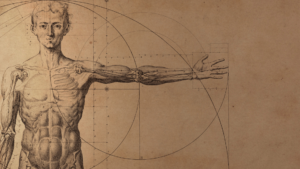
Every photographer dreams of owning the perfect camera. But what exactly is the perfect camera? This is a hard question since cameras come in all shapes and sizes, each with its own unique strengths and weaknesses. We set out to find the best camera for photographers, and after our research, we uncovered a list of cameras that will take high-quality photos, no matter what type of photography you do. So, which camera is best? How To Spot a High-Quality Camera Equipment? Here are some things to consider:
- The ISO
ISO is a measure of the film speed on a camera. It is basically a measure of how fast the film moves (and thus, how many frames per second it can capture). In photography, higher ISOs produce sharper images under low-light conditions, such as indoors or at night. But because the film is still going through the same process as it would at higher speeds, a higher ISO can result in less natural-looking images. The higher the ISO, the more difficult it will be to keep noise out of the image as the camera closes in on the film.
An ISO is a shorthand definition for a measurement unit that is commonly used in the photographic industry and by video professionals. The height (or length) of the ISO is five. It stands for International Standards Organization, managed by the United Nations. ISO is a measurement unit and is based on an agreed-upon standard.
- The Aperture
The aperture is the diaphragm that’s found in each lens of your camera. This diaphragm regulates the amount of light that reaches your camera’s sensor, and it’s controlled by an adjustable part that you can adjust using the camera’s manual system. The aperture can be anywhere from f/2.8 to f/22, but f/2.8 is the most commonly used and is recommended for most photos.
- The lenses
The lenses inside a camera are often overlooked, but they can make a huge impact on the quality of an image. Sharpness is, after all, the most critical quality of any picture you take. And the lens sharpness is one of the most significant determinants of this quality. The optical system is made up of a lens, sensor, and mirror. The lens is the heart of the camera and determines how much light enters and is reflected back through the camera.
- The sensor size
The sensor size is the diameter of the sensor hole, which is enlarged by the sensor connector. The sensor connector is a round component mounted on its circuit board. The sensor hole is for mounting the sensor. The connector usually has 3 or 4 pins that connect to the sensor through the circuit board. Another point to note is that the hole is larger than the sensor connector.
- The megapixels
The MEGAPIXELS is a 26,000-pixel camera sensor that’s so large it can fit on the back of a MacBook Pro. It’s so big that it puts conventional CMOS sensors to shame; the pixel count itself isn’t that impressive, but the pixel density is. For comparison, the ARCore camera sensors on the iPhone 8 Plus and iPhone X have 1.4 million (or 1.2 million, depending on who’s counting) pixels. The Galaxy S9 has 1.04 million (or 1.1 million, depending on who counts) pixels. The MEGAPIXELS’ pixel-count-per-area ratio (P/A) is 10 times higher than the iPhone X’s P/A and 7 times higher than the Galaxy S9’s P/A.
- The Image stabilization
The image stabilization technology built into many cameras is a godsend for action photographers, but did you know that this handy feature also comes in handy for videographers? Image stabilization is built into the camera’s sensor, so it works independently of the lens itself. The stabilization technology captures images as a series of stills, then combines these into a seamless video. That means, with the steady hands of a skilled video editor, you can eliminate any unwanted camera shake, blur, or wobble that happens when you move around with a camera in your hand.
So, how do you know which digital camera to buy? The old adage “you get what you pay for” certainly applies here. Quality digital cameras, especially professional-grade ones, can be expensive, but luckily there are affordable cameras worthy of an amateur photographer’s budget.









